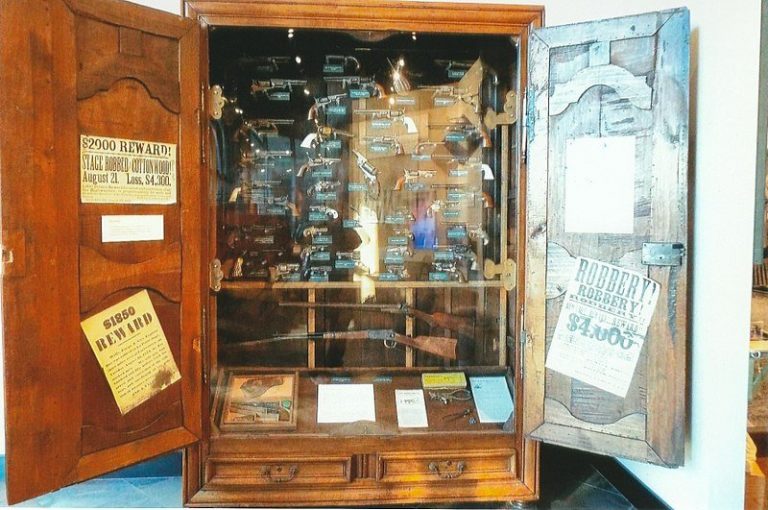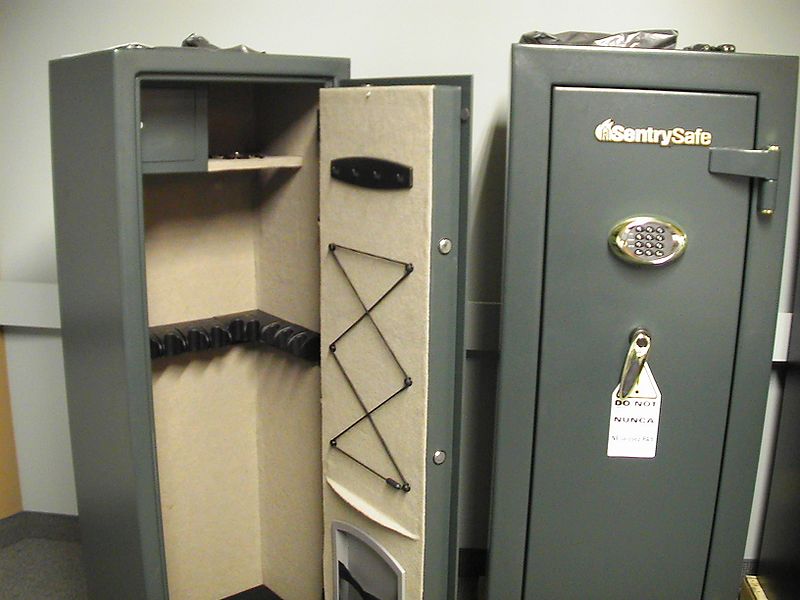Because we are living in troubled times, the protection of family and individual property becomes necessary. For most people, it involves the use and ownership of firearms. With proper permits and knowledge about storage and maintenance of your gun, you can purchase it and keep it in your home for safe keeping.
And speaking of storage, a gun should be kept in a designated storage – not just under your dresser for clothes, bedroom side drawer or in the far cabinet on your bathroom. Since a gun is a deadly weapon, one should always store it in a gun safe or in a gun cabinet. These are the only secure places to store your guns in the home, but they are often confused with one another. Choosing between a gun safe and a gun cabinet may seem simple at first, but you have to know that these are different from each other. Your choice will be determined by your budget and the level of security you are fine with.
What is a gun safe?
As the name suggests, a gun safe is a safe designed for storing guns. It’s a protective container, much like any other safe, but is designed for storing firearms, ammunition and its related accessories. It’s a hunk of steel with a lock, has a sturdy construction, usually very heavy, and fire-resistant These characteristics of gun safes differ among gun safe models, but basically that’s what you need to be looking for. Good gun safes must keep your gun safe from fire, flood and theft. If you want to opt for a gun safe, here are the main features you need to look out for:
Locking mechanism
The locking mechanism of the safe is the first and most important feature of a gun safe. This provides the first line of defense against any abuse by people who will try to open it to access the firearms inside. Gun safes can have a traditional dial lock mechanism or an electronic lock.
The traditional dial lock mechanism tends to last longer and have fewer problems. You just need to rotate it both clockwise and counter clockwise to arrive at your pre-set number combination. These needs maintenance from a lock technician every few years to keep it working nicely.
Meanwhile, electronic locks usually have a keypad where you can enter a numeric sequence you have set as the combination. Some even comes with advanced biometric access, so that only the people with a pre-set fingerprint scan can open the safe. This type of locking mechanism is battery-powered, so you need to check it periodically.
There are safes with redundant locks, consisting of both a mechanical and an electronic lock built together. This way, you can get the convenience of the electronic lock, but if it fails, you can still be able to open the safe using the dial.
Steel thickness
The thickness of steel is determined by the gauge number, and the lower the number, the thicker the steel. The insides of a gun safe are always lined and made with pure steel, with a minimum of 10 to 12 gauge thickness. This prevents criminals from drilling the safe and getting access to the armory.
Size
When buying a gun safe to simply store your one gun for protection, choose one that can fit its size, its ammunitions and all other accessories. But if you are looking for a safe for guns you use for hunting and shooting, the recommendation is to buy double or even triple the size you think you need. As you enjoy the hobby, you may find yourself buying an additional gun or additional accessories you haven’t thought about at first. They say gun safes are like kitchen cabinets, because they fill up fast.
Weight
Go for a heavy safe. Generally, the heavier the safe, the sturdier its construction. But of course, this also comes with a bigger price.
Hinges
A gun safe must have internal hinges, because a door with external hinges only can be chiseled off by a burglar who wants to remove the door to get your gun. However, as long as the safe is equipped with a good bolt and locking mechanism, it is highly capable to provide the user with ample security for the safety of their firearms.
Bolts
Bolts provide the second layer of defense for the safe. Choose a safe with a minimum of three bolts on the side, as these can add an overall strength factor for the safe.
Fire resistance rating
It is best to buy the safe with the highest fire rating you can afford. These safes are certified with an ETL or UL fire rating. These ratings are calculated based on the number of minutes of fire resistance the safe can offer at a given temperature in Fahrenheit. The words to look for is “fire-resistant,” so if the label says “fireproof,” it’s not legit. Also, the higher the fire rating, the better the protection against flooding.
Advantages of gun safes:
- Thick steel wall structure can withstand sustained assault
- Protects firearms properly due to locking mechanism
- Construction can protect contents from fire and water damage
- Usually too heavy for a thief to move
- A better choice than a cabinet if you have kids in the house
Disadvantages of gun safes:
- They usually look like big slabs of steel which does not fit with all interior décor
- Can be expensive
What is a gun cabinet?
A gun cabinet is a cabinet which is a perfect option if you want to display your gun collection. It’s similar to that of your kitchen or cutlery cabinet that you can finish with a wooden door or a glass door for display. A built-in cabinet or a free-standing cabinet are your two options for a gun cabinet. For many gun enthusiasts, custom-made, built-in cabinets are the best choice because they are designed to fit their gun collection. It’s also ideal for security reasons.
However, since it’s not a safe, a cabinet’s biggest disadvantage is its lacking security. When it comes to keeping your gun secure from unauthorized use, a lock you can put on it can be picked open. Or someone can get a hold of your keys and try to use it or duplicate it. Access to the guns in this type of storage is easy – but it can work for your advantage during times of emergency.
When looking for a gun cabinet (or having one custom-built), here are the important features you need to focus on:
Materials
Wood is a common material used for making gun cabinets, as with any quality cabinet. You would want one made of pure, solid wood because it’s the most durable and most long-lasting of all your options. Be careful when shopping. “Solid wood veneers” are not the same thing, as these are made of sawdust composite with a thin layer of solid wood. Beware of labels such as “real wood” and “all wood,” because composite material made from sawdust is still technically considered as wood.
Door
Make sure the doors of your gun cabinets swings evenly and closes snugly.
Lock
The lock mechanism for gun cabinets usually involves locks you can find on common cabinets, or a padlock. Test the locking mechanism before buying, as it should feel smooth and solid. Always keep the keys with you or store it in a safe and secret place.
Cabinet base
Gun cabinets are usually equipped with base attachments that serve as support for the whole enclosure. Avoid those that use foam inserts as cushioning, as this can hold and absorb moisture, which promotes rust.
Drawers
If your gun cabinets have drawers, make sure they open and close smoothly without sticking.
Compartment modes
Gun cabinets usually come equipped with a single compartment, but there are also others with adjustable compartment modes depending on the number of guns you want to store and display. These compartments can be open-shelved or enclosed in glass, depending on your choice.
Advantages of gun cabinets:
- These are generally more visually pleasing and can be custom-made to blend with interior decor
- Allows you to store your guns for display
- Can be moved by one person
- Can be chosen to fit your budget, depending on the type of wood you choose and the features it has
Disadvantages of gun cabinets:
- Easier than a safe to break into
- Not the safest option in a household with curious kids
- Offers no protection against flood or fire
- Cabinet rating may not meet requirements for some insurance companies

